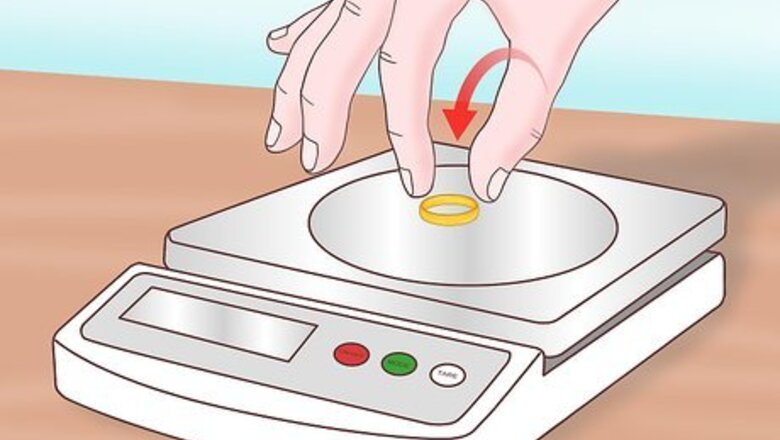
views
Observing the Gold
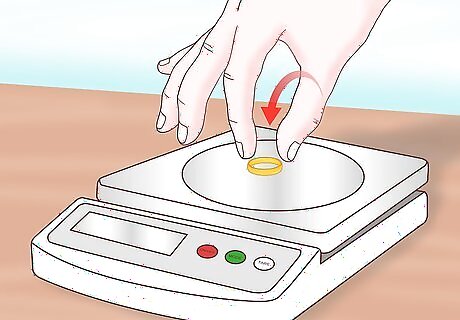
Weigh the gold. Gold is a very dense metal, so it will be heavier than it looks. Use a jeweler’s scale to determine the exact weight of the gold. Gold bars typically have their weight inscribed on them. Make sure the actual weight matches this inscription. Many gold coins and pieces will also have their weight stamped on them. Check that the weight is accurate.
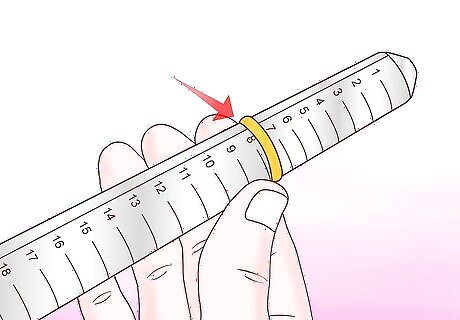
Measure the size. Gold should be small compared to its weight. Fake gold pieces may have a heavier weight but also be too large for the weight to match the weight of real gold. Check the diameter and thickness of any gold coins you’re considering buying. The specifications for collectible coins can be found in numismatic guides or online. Gold bars are sold in many different sizes, but the size of a standard gold bar is 7”x 3 ⅝” x 1 ¾” and weighs 400 ounces or 27.5 pounds. Determine the actual volume of irregular objects, such as rings, by placing them in a graduated cylinder accurate to .1 milliliters(mLs). Place 20mLs of water in the cylinder and add the object you wish to test. Record the difference in water level. 1 cubic centimeter is equal to 1 mL.
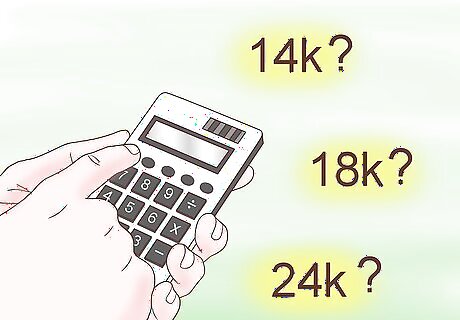
Calculate the density of your gold. Density is a measurement of mass per volume. Once you know the weight of the gold and its volume, you can easily calculate density by dividing the mass by the volume. 24 karat gold has a density of 19.3 grams per cubic centimeter. 18 karat gold has a density of 15.6 grams per cubic centimeter. 14 karat gold has a density of 13.1 grams per cubic centimeter.
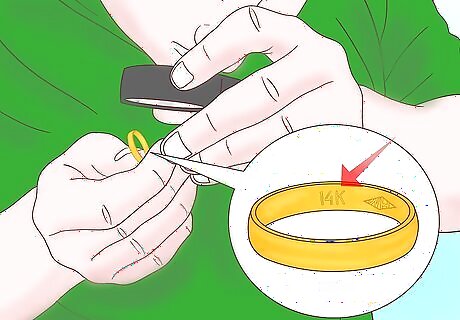
Check for a stamp. Gold will be stamped with the karat weight or purity of the gold as well as the manufacturer’s name. The stamp will typically be on the clasps of jewelry. Typical karat markings are 10K, 14K, and 24K Some counterfeit gold will have a karat stamp on it, but rarely have a manufacturer’s name.
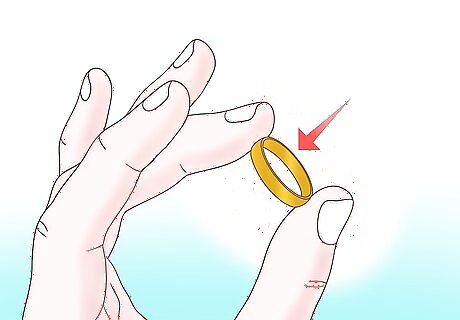
Look for discoloration on the metal. As a precious metal, gold does not tarnish or rust. If you see any discoloration on the metal, it is a sure sign that it is not pure gold.
Testing the Gold
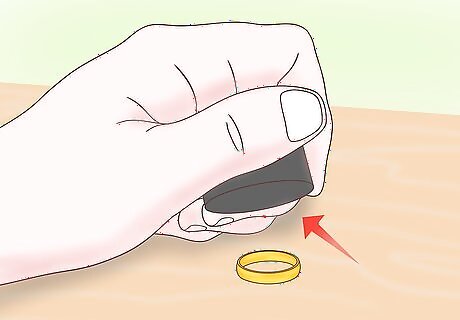
Test the magnetism. Gold is not magnetic, however, many metals used to make fake gold are. Get a magnet that is stronger than a typical refrigerator magnet to perform this test. Hold the magnet slightly above the gold piece. Observe if the gold is attracted to the magnet and if the magnet can pick up the piece of gold.
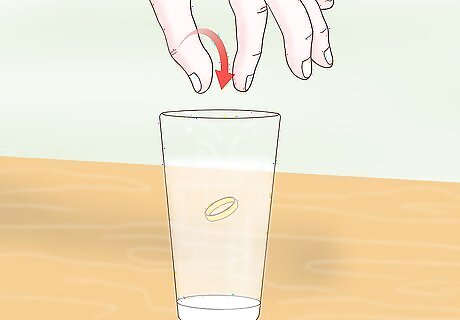
Perform the float test. You can test whether or not the piece of gold floats to determine if its real. Real gold is dense and will sink, but many pieces of fake gold will float. Get a glass large enough to fit the piece of gold, and fill it with water. Drop the gold piece into the water, and observe it.
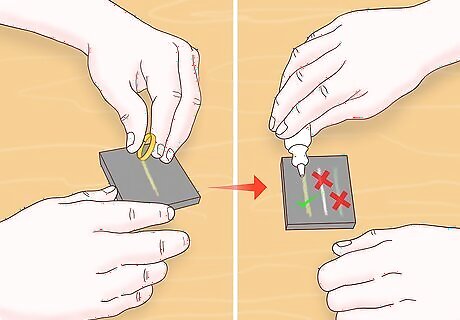
Complete the nitric acid test. This is a good test to use on scrap gold, but not recommended for jewelry you plan to wear or resell. This test uses nitric acid to see if the gold has a chemical reaction with it. One hundred percent gold will have no reaction to the nitric acid. Put on safety goggles and gloves before working the the nitric acid. Make a light, small scratch on the gold using a nail file. Use an eyedropper to apply one drop of nitric acid to the scratch on the gold. If the liquid turns greenish, the item is probably mostly another metal like zinc and plated with gold. If the liquid turns a milky color, the item most likely is mostly sterling silver and plated with gold. If you're nervous about using nitric acid, you could try a vinegar test instead. While slightly less accurate than nitric acid, vinegar is a milder acid that will produce similar results.
Spotting Fool's Gold (Pyrite)
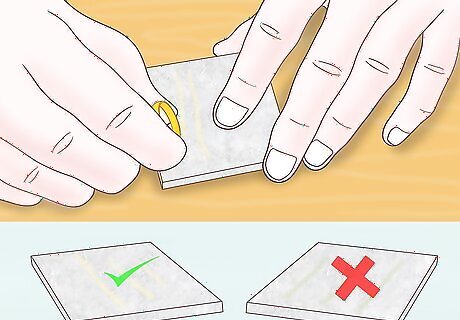
Perform a streak test. Rub a sample of the suspected gold or pyrite on an unglazed ceramic tile. A colored streak will be left behind similar to a pencil mark. Fool's gold or pyrite will leave behind a greyish streak. Real gold will leave a shiny golden streak.
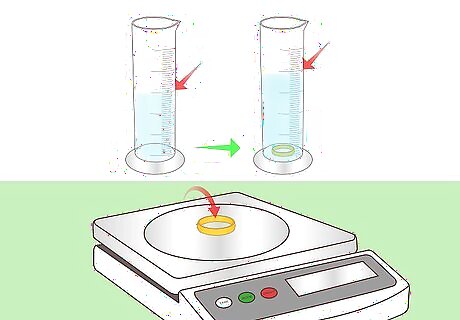
Test the density of the sample. Determine the weight and volume of your sample. Use a digital scale to weigh the sample and record the mass in grams. Place the sample in a graduated container filled with water to determine the volume of displaced water. The volume the water level rises will indicate the volume of your sample (1 milliliter is equal to 1 cubic centimeter). Divide the mass by the volume. Pyrite has a density of 4.8-5 grams per cubic centimeter Pure gold has a density of 19.3 grams per cubic centimeter.
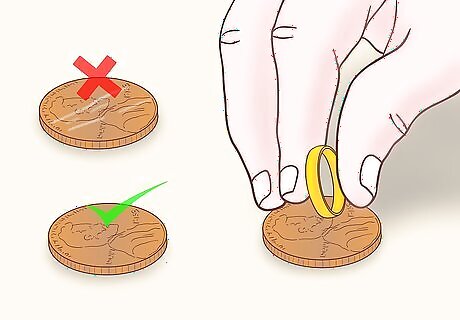
Do a scratch test. The hardness of a mineral can be determined by its ability to scratch or be scratched by an object. Try to scratch a copper penny with your suspected gold. Real gold will not scratch a penny and can be scratched by the penny. Fool's gold or pyrite will scratch a penny and cannot be scratched by the penny.
Buying Gold
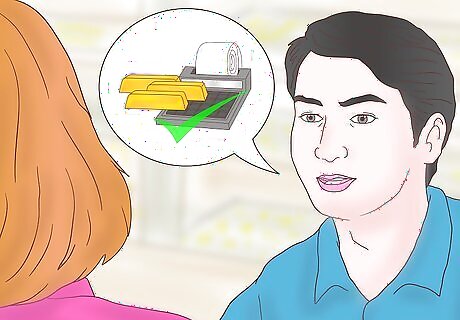
Ask for the item’s melt value. Gold jewelry and coins can be melted down to extract the metal from the piece. If you are told that the melt value exceeds the weight of the item, you should be wary of the purchase because it may be a gold plated or counterfeit piece.
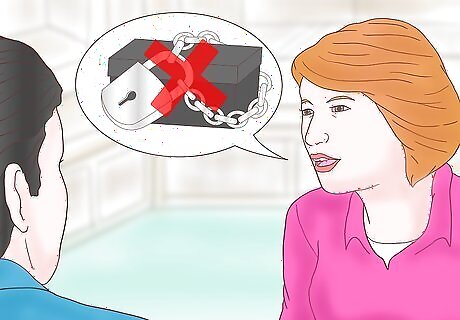
Avoid purchases delivered to a “secured location”. Some business trick consumers into buying gold by saying that the purchase will be stored in a high security location for safety. In many instances the gold product does not actually exist or is of an inferior quality. Always inspect your gold before making a purchase. Rent or invest in a safety deposit box or safe to protect your gold.

Know the current market value for gold. Gold price is based on its weight. The price of an ounce of gold fluctuates regularly. Reputable dealers will provide you with the current market value of an ounce of gold when making a purchase. Expect mark-ups when purchasing coins or jewelry to cover the artistic or collectible value of the item. If the price of an item is below the market price for its weight you should avoid the purchase.
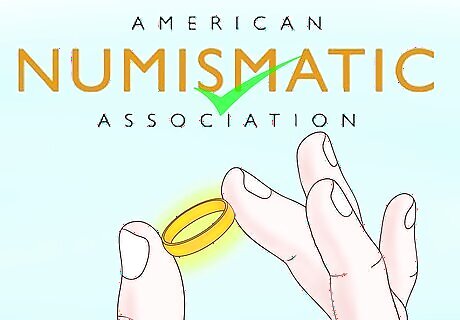
Purchase certified gold coins. American Numismatic Association (ANA) provides grading and certification of collectible gold coins. Make sure that any gold coins you purchase have been assessed for grading by the ANA.




















Comments
0 comment